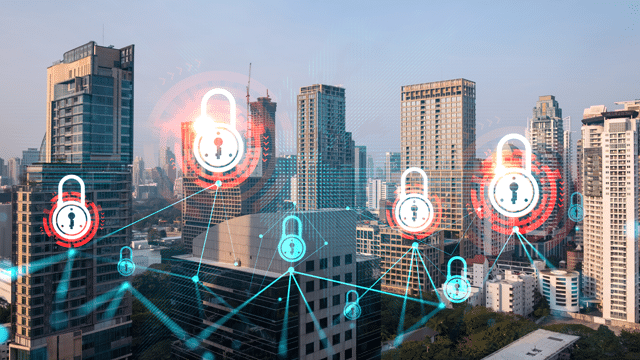In the ever-evolving landscape of digital identity management, two acronyms frequently surface – IAM and CIAM. While both play pivotal roles in securing access to digital resources, they serve distinct purposes and cater to different user demographics. In this article, we delve into the intricacies of Identity and Access Management (IAM) and Customer Identity and Access Management (CIAM) to elucidate their differences and highlight their unique functionalities.
IAM: The Foundation of Digital Security
IAM, short for Identity and Access Management, is a comprehensive framework designed to ensure that the right individuals have the right level of access to digital resources within an organization. In essence, IAM is the bedrock of digital security, providing a structured approach to managing user identities, authentication, and authorization.
One of the primary functions of IAM is to authenticate users – verifying the identity of individuals accessing a system or network. This involves the use of various authentication methods such as passwords, biometrics, or multi-factor authentication (MFA). Once the user is authenticated, IAM takes charge of authorization, determining the level of access the authenticated user has based on their role and responsibilities within the organization.
IAM systems are typically employed within enterprise settings, where the focus is on managing the identities and access privileges of employees. The aim is to enhance security, streamline access management, and ensure compliance with regulatory standards. By implementing IAM, organizations can mitigate the risks associated with unauthorized access, data breaches, and insider threats.
CIAM: Putting Customers at the Center
On the other side of the identity management spectrum, we have Customer Identity and Access Management (CIAM). While the core principles of IAM are retained, CIAM is tailored to meet the specific needs of businesses engaging with external customers, partners, and vendors. The emphasis shifts from internal workforce management to delivering a seamless, secure, and personalized experience for external users.
CIAM recognizes the diverse nature of customer interactions in the digital age. It goes beyond the employee-centric approach of IAM and focuses on managing identities for a broader audience. This includes customers, clients, partners, and any external entities interacting with a company’s digital services.
A key differentiator is the user-centric design of CIAM. Customer expectations demand a frictionless experience, and CIAM platforms are engineered to provide just that. Registration, login, and account recovery processes are optimized for simplicity and user-friendliness. Social logins, passwordless authentication, and single sign-on (SSO) are common features in CIAM systems, contributing to a more convenient user experience.
Moreover, CIAM platforms often incorporate features for managing customer consent and preferences. This is especially crucial in a regulatory landscape where data privacy laws, such as GDPR, require organizations to obtain explicit consent from users regarding the collection and use of their personal information.
Key Differences Between IAM and CIAM
- Scope and Target Audience:
- IAM: Primarily focuses on managing the identities and access of internal employees within an organization.
- CIAM: Geared towards managing the identities of external users, including customers, partners, and vendors.
- User Experience:
- IAM: Prioritizes security and compliance, sometimes leading to a more complex and stringent user authentication process.
- CIAM: Emphasizes a seamless and user-friendly experience to enhance customer satisfaction, often incorporating features like social logins and passwordless authentication.
- Authentication Methods:
- IAM: Typically employs traditional authentication methods like passwords, biometrics, and multi-factor authentication for internal workforce security.
- CIAM: Adopts a more diverse range of authentication methods catering to customer expectations, such as social logins and passwordless authentication.
- Regulatory Compliance:
- IAM: Focuses on meeting internal compliance requirements and standards relevant to employee access and data security.
- CIAM: Addresses external regulatory requirements related to customer data protection and consent, such as GDPR.
- Identity Lifecycle Management:
- IAM: Manages the entire identity lifecycle of employees, from onboarding to offboarding.
- CIAM: Focuses on the customer lifecycle, including registration, account management, and preferences, to enhance the overall customer journey.
Choosing the Right Approach: IAM, CIAM, or Both?
In many cases, organizations find value in implementing both IAM and CIAM solutions to address the diverse aspects of identity management. For instance, a company may use IAM to secure internal systems and resources, ensuring that employees have appropriate access levels based on their roles. Simultaneously, they may deploy CIAM to provide a seamless and secure experience for customers interacting with their digital platforms.
The integration of IAM and CIAM is particularly relevant in scenarios where there is a need for a unified identity strategy. This approach ensures a consistent and secure experience for both internal and external users while maintaining the necessary controls and compliance standards.
Balancing Security and User Experience
In the dynamic landscape of digital identity management, IAM and CIAM stand out as pillars supporting the overarching goal of securing digital interactions. IAM, with its focus on internal workforce management, provides a robust foundation for securing organizational assets. On the other hand, CIAM caters to the external realm, prioritizing user experience and customer satisfaction.
Ultimately, the choice between IAM and CIAM, or a combination of both, depends on the specific needs and goals of an organization. Striking the right balance between security and user experience is key to navigating the complexities of the digital landscape and building trust with both internal and external stakeholders. As technology continues to advance, the synergy between IAM and CIAM will play a crucial role in shaping the future of digital identity management.






